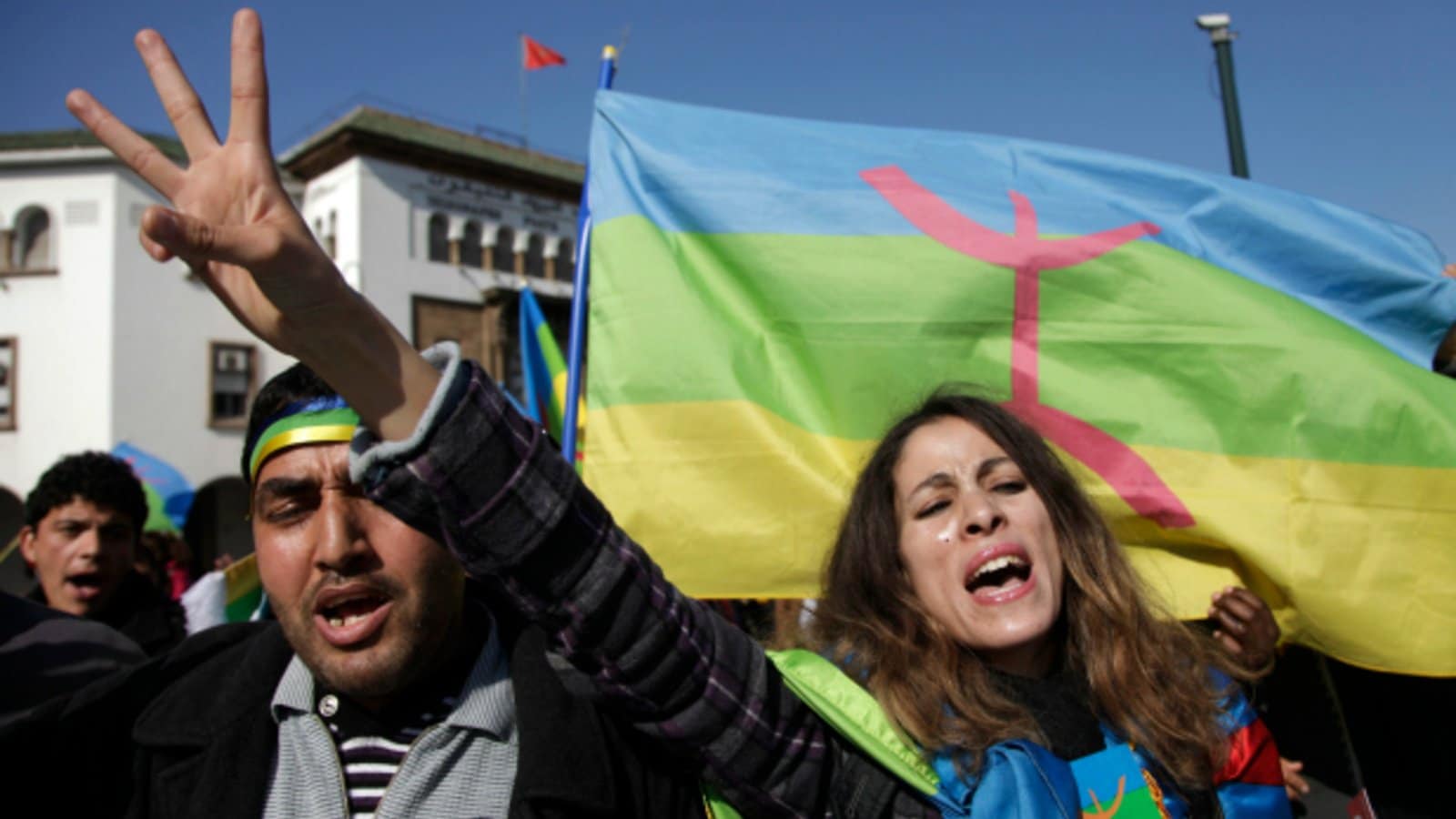You might see in certain events, ceremonies, or manifestations the Amazigh people holding up three fingers mostly ring finger, middle finger, and index finger. This behavior is well known for Imazighen, it is used to express their belonging to the Amazigh culture. The latter is one of the oldest cultures in the world. It has survived for centuries and it still manifests itself in northern Africa. In this essay, we are going to shed light on the three pillars: land, language, and human being or people that represent the Amazigh identity.
Akal (land): North Africa is the homeland of the Amazigh people. It is called “Tamazgha”, it covers the land from the Siwa oasis Egypt in the east to the Canary Islands in the west and from Niger and Burkina Faso in the south to Algeria and Tunisia in the north. Imazighen “free men” inhabited this huge area for centuries and defended their land with courage and bravery. Wars
against Romans, Arabs, Phoenicians, Spain, and France are manifestations of how Amazigh people are linked to their land even if it may cost them their life. Moreover, the Amazigh flag in its entire structure represents and gives an added value to the land.
The Amazigh flag is divided into four colors: blue represents the sea or the water, green represents the mountains, yellow represents the vast desert, and the red color which will be discussed in the last fundamental (Arkat, 2019). Chtatou (2020) asserted that “one must understand that the idea of homeland resonates strongly with the Amazigh people. They have a unique relationship to the land that extends beyond the physical aspect and moves into the spiritual sphere”.
Awal (language): Tamazight is the language that is spoken by the Amazigh people in North Africa. “A linguistic classification of Tamazight places it as a part of the Afro-Asiatic language family alongside semiotic, Chadic, Egyptian, Cuchtic, and Omotic (afro-Asiatic: Ethnologue, cited in Cotter, 2013. P, 2). Even if it is mostly an oral language but Tamazight survived for
centuries. Amazigh language contacted many other languages such as French, Spanish, and Arabic. However, Amazigh people have a strong relationship with their mother tongue and they have been loyal to their language for many years.
Recently, many Amazigh voices defend the language to be taught in schools especially in morocco and Algeria. These two countries have known many demonstrations by Amazigh people to place Tamazight officially in institutions and media. This shows the significance of their language to their hearts. To put it in simple words,
“when one looks at the Amazigh people, there is a clear correlation between the relevance of language and the preservation of culture throughout time”. Prof. Chtatou.
Afgan (human being, people): the last fundamental of Amazigh identity is about the human being. The name “Amazigh” means “free man”. That is to say, freedom is one of the themes and aspects of Amazigh culture. It is the freedom to travel around Tamazgha or North Africa, the freedom to use their native language, and the freedom to express their identity. Because of the importance of human beings in Amazigh culture, the Berber academy put the red letter Z in Tifinagh in the Amazigh flag to represent the Amazigh or the free man in his land (Arkat, 2019).
The three fundamentals of Amazigh identity are spreading over North Africa. People show their honor to be part of this culture. Imazighen of Morocco, Algeria, Tunisia, Libya, and other Amazigh speaking countries enjoy and celebrate Amazigh events such as Amazigh New Year and holding up the three fingers and the Amazigh flag. Even if they live in different
countries, their loyalty to the Amazigh identity is manifested in many different ways.
The views expressed in this article are the author’s own and do not necessarily reflect Amazigh World News’ editorial views.

